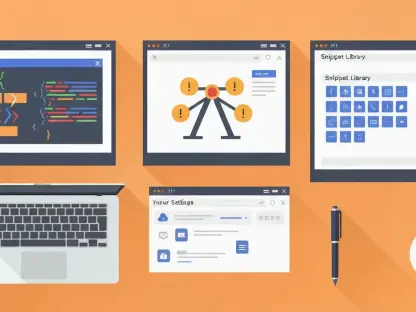In the ever-evolving landscape of technology, open source software (OSS) has emerged as a fundamental building block for countless businesses, driving innovation across internal systems and commercial offerings with its freely accessible code and collaborative ethos. Yet, beneath the surface of its undeniable advantages lies a complex web of risks that can catch even the most tech-savvy organizations off guard during transactions such as software licensing, acquisitions, and service agreements. As reliance on OSS continues to grow, with a staggering 96% of organizations maintaining or increasing its use according to recent industry reports, understanding and mitigating these risks has never been more critical. This article aims to unravel the dual nature of OSS, shedding light on its transformative potential while delving into the hidden challenges it poses in transactional contexts. By exploring its benefits, licensing intricacies, and potential pitfalls, a clearer path emerges for businesses to harness OSS effectively while safeguarding their interests.
Unpacking the Foundations of Open Source Software
The essence of open source software lies in its accessibility—source code that is publicly available for anyone to use, modify, and distribute, often under specific licensing frameworks. This model fosters a collaborative environment where developers worldwide contribute to and improve the software, making it a cornerstone of modern tech ecosystems. Despite its pervasive presence, OSS frequently remains an unseen component in business operations, embedded deep within systems and often overlooked until transactional complications arise. The significance of OSS cannot be overstated, as it powers everything from enterprise solutions to consumer applications, yet its subtle integration can lead to unexpected challenges during tech deals. Businesses engaging in software licensing or acquisitions may find themselves grappling with licensing terms they didn’t anticipate, underscoring the need for heightened awareness. Addressing OSS early in transactional planning is essential to avoid legal entanglements and ensure that its role is fully understood and managed.
Licensing forms the backbone of OSS usage, and the distinction between permissive and copyleft licenses shapes how businesses can leverage this resource. Permissive licenses, such as Apache 2.0, offer flexibility, allowing developers to incorporate OSS into proprietary products without stringent requirements to share modifications. In contrast, copyleft licenses like the GNU General Public License impose stricter conditions, mandating that derivative works also remain open source, which can conflict with commercial objectives. This dichotomy presents a critical decision point for organizations integrating OSS into their offerings, as the wrong choice can jeopardize proprietary rights. For instance, a company embedding copyleft OSS into a commercial product might inadvertently be forced to release its own code publicly, undermining competitive advantage. Understanding these licensing nuances is vital for anyone navigating tech transactions, as they directly impact how software can be used, sold, or transferred in business dealings.
Harnessing the Advantages of Open Source in Business
One of the most compelling reasons businesses turn to OSS is its capacity to accelerate software development while significantly reducing costs. By tapping into existing, well-tested codebases, developers can bypass the time-intensive process of building solutions from the ground up, enabling faster product launches and more efficient workflows. This approach is particularly valuable in a competitive market where speed to market often determines success, allowing both startups and large corporations to allocate resources more strategically. Cost savings are another major draw, as OSS eliminates the need for expensive proprietary licenses, freeing up budgets for other critical areas like marketing or innovation. However, while these benefits are substantial, they must be weighed against potential risks that could emerge during transactions, making it imperative for businesses to approach OSS adoption with a balanced perspective that prioritizes long-term sustainability over short-term gains.
Beyond efficiency and affordability, the collaborative nature of OSS communities offers unique advantages in terms of security and innovation. With a global pool of contributors constantly reviewing and refining the code, vulnerabilities and bugs are often identified and resolved more swiftly than in closed, proprietary environments where resources may be constrained. This crowd-sourced vigilance can result in more robust and secure software, providing businesses with a level of assurance that might be harder to achieve through in-house efforts alone. Additionally, the open nature of OSS fosters a culture of innovation, as developers build upon each other’s work to create cutting-edge solutions that push technological boundaries. For organizations involved in tech transactions, these benefits can enhance the value of software assets, but only if the underlying OSS components are managed with care to avoid licensing conflicts or unforeseen obligations that could diminish those gains over time.
Identifying Risks in Transactional Contexts
While the advantages of OSS are clear, the risks it introduces in tech transactions can be substantial, particularly when copyleft licenses are involved. These restrictive terms require that any software derived from the original OSS also be released under open source conditions, which can strip businesses of proprietary control over their products. This poses a significant threat to commercial value, as a company might lose the ability to monetize its software exclusively, impacting not only its bottom line but also the interests of downstream customers or partners. In the context of software licensing or acquisitions, such a scenario could derail deals or reduce the perceived worth of assets, especially if the presence of copyleft OSS is discovered late in the process. Mitigating this risk demands proactive scrutiny of all software components to ensure licensing terms align with business goals before finalizing any transaction.
Another layer of complexity arises from the dependency on external developers and the potential pitfalls embedded in various transactional scenarios. Since businesses using OSS often lack direct control over the original code, they must rely on the expertise and ongoing support of the contributing community, which can be unpredictable. This reliance becomes particularly problematic in acquisitions, where due diligence might uncover undisclosed OSS with restrictive terms, diminishing the value of the target company’s intellectual property. Similarly, in service agreements, especially those involving outsourcing, deliverables created using copyleft OSS could inherit open source obligations, limiting the customer’s ability to use them commercially. These hidden liabilities highlight the importance of thorough vetting and clear contractual provisions to address OSS usage, ensuring that all parties are aware of potential constraints and can plan accordingly to avoid costly surprises during or after the transaction.
Strategies for Mitigating Open Source Challenges
To navigate the complexities of OSS in tech transactions, adopting a proactive approach through comprehensive due diligence is paramount. This involves meticulously scanning software for embedded OSS components and understanding the associated licensing terms before entering into any agreement. Specialized tools and third-party services can assist in identifying hidden OSS, providing clarity on whether permissive or copyleft licenses apply and how they might impact the deal. In acquisitions, for instance, a detailed audit of the target company’s software stack can reveal potential risks that could affect asset valuation, allowing for informed decision-making. Likewise, in licensing agreements, transparency about OSS usage ensures that all parties understand their rights and obligations upfront. By prioritizing these steps, businesses can minimize the likelihood of legal disputes or unexpected restrictions, paving the way for smoother transactional outcomes.
Beyond due diligence, embedding explicit contractual safeguards into tech agreements offers another layer of protection against OSS-related risks. Contracts should clearly outline the responsibilities of each party regarding OSS usage, specifying whether and how open source components are incorporated into deliverables or licensed products. Provisions can also mandate disclosure of OSS in software solutions, ensuring that no surprises emerge post-transaction. In service agreements, for example, clauses can stipulate that deliverables must be free of copyleft OSS unless otherwise agreed, preserving the customer’s ability to use the output commercially. These measures not only reduce ambiguity but also establish a framework for accountability, enabling businesses to leverage the benefits of OSS while mitigating its potential downsides. As the tech landscape continues to evolve, such strategic planning will be essential for maintaining a competitive edge and transactional integrity.
Building a Future-Ready Approach to OSS
Reflecting on the journey through the intricacies of open source software, it becomes evident that businesses must balance its undeniable benefits against the lurking risks during transactions. Many organizations have learned the hard way that overlooking OSS can lead to diminished asset value or legal entanglements, particularly when copyleft licenses are involved. The lessons drawn from those experiences emphasize the importance of vigilance, with companies recognizing that proactive measures are non-negotiable in software licensing, acquisitions, and service agreements. Moving forward, adopting robust strategies like thorough software audits and clear contractual terms will be crucial to prevent similar pitfalls. By integrating specialized scanning tools and fostering transparency in dealings, businesses can confidently harness OSS innovation while protecting their interests. As the reliance on open source continues to grow, staying ahead with informed planning and adaptability will ensure sustainable success in an increasingly complex tech environment.









